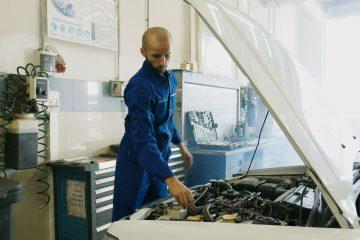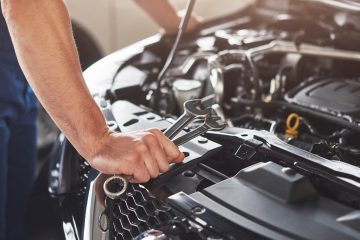If you’re out on the highway and you’re feeling every crack in the road and every pebble you drive over, chances are that your shocks or struts are worn out and need to be replaced. Shocks and struts perform the same basic function – dampening road vibration. When they wear out, you experience decreased comfort as well as decreased safety on the road. Wear in your car’s suspension can lead to instability on the road and increased stopping distances when braking. Many people don’t think about it, but your shocks and struts are are a vital part of your car’s safety systems.
When it’s time to replace them, the first thing to do is figure out whether you have standard shock absorbers or MacPherson-style struts. A traditional shock absorber typically will bolt directly to the car’s body and then to the suspension control arm. The leaf or coil spring is a separate piece with its own distinct mounting points. A MacPherson strut also tends to be an anchor point between the wheel carrier and the car’s body. Replacing MacPherson struts requires special tools, but can be a suitable DIY job.
Replacing standard shock absorbers is a comparatively easy process. Generally, you raise and support the end of the car you’re working on, unbolt, and then remove the shock absorber. To install the new one, you simply bolt it in, paying attention to the factory-approved torque specifications, of course.
Strut replacement is a little more complex. As struts tend to be further integrated into a car’s suspension and steering, more care needs to be taken. Often, you’ll find that a car’s alignment can be disturbed when a strut is removed and installed. One thing you can do is make alignment marks with paint to ease reinstallation. However, you should probably err on the side of safety and have an alignment done after strut replacement.
As with shocks, you raise and support the appropriate end of the car. Once you’ve made some alignment marks, you generally unbolt the strut from the wheel carrier. From there, you unbolt the strut bearing from the car and remove the strut. From there, you can either install a pre-built strut, or you can rebuild the strut yourself before installing it. To do so, you’ll need spring compressors to release the tension from the coil spring before you disassemble the strut.
Often, the difference between a worn strut and a new one is night and day in terms of road feel. In addition, your car will be safer, and new struts can only help with fuel economy.



